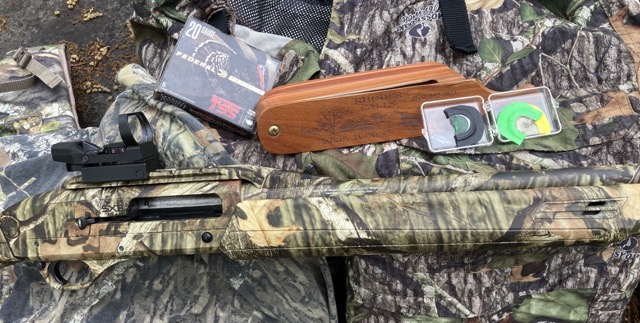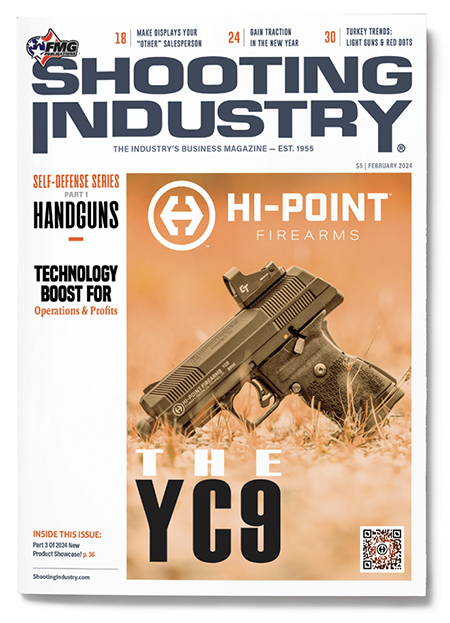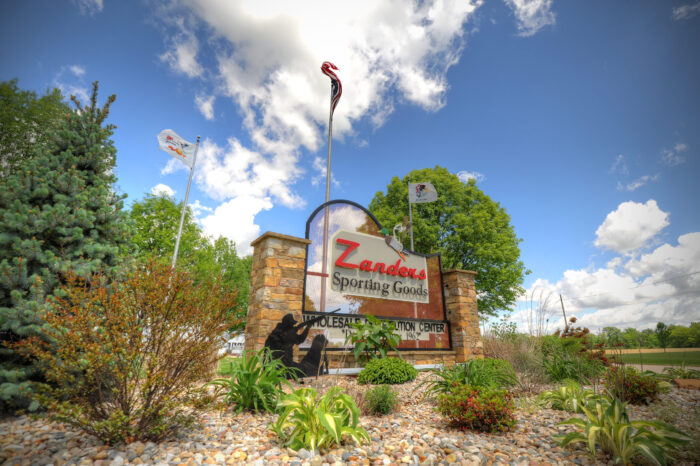Spring Turkey Trends
Hunters Opt For Lighter Guns, Loads & Electronic Optics
Willy Johnston of Hamburg, Ark., doesn’t like change, but he has embraced the .410-bore shotgun for turkey hunting.
Johnston, 70, represents an evolution in the turkey hunting retail market. It’s an older demographic who has embraced technologies that enable hunters to shoot smaller, lighter guns with less recoil more accurately.
Johnston is impressed with the tight patterns his Stevens 301 prints at ethical turkey hunting distances. The red dot sight that came with the package assures him his shot will be true.
“Wherever you put the dot is where it’s going to hit,” he observed. “You don’t have to worry about pulling off or your sights not being aligned just right. Just put the dot on his head and shoot.”
Nathan Dunn, owner of Dunn’s Sporting Goods in Pevely, Mo., acknowledged the trend in the Midwest.
“The past few years we’ve sold a lot more sub-gauge guns, a lot of 20 gauges and a lot of .410,” Dunn said. “A lot of hunters are getting older. They’re tired of packing around a big 12 gauge.”
The Stevens 301 and the Mossberg International Series are popular among his turkey hunting customers, he added. The Mossberg International is a semi-auto available in 20 and 28 gauge, as well as .410 bore. It has a fiber optic ghost ring sight and a rail mount for an optic. According to Dunn, the Burris FastFire is his most popular red dot. But he also sells a fair amount of Holosun and Vortex.
Even though Missouri is a premier turkey hunting state, Dunn shared it is a limited market in his area. Turkey hunters don’t buy large amounts of ammunition, and they don’t change shotguns frequently. Nevertheless, it is a market that must be tended.
“It’s all in the spring, and it doesn’t show a huge spike,” he said. “Fall turkey hunting doesn’t really do anything for us. We sell decoys and guns, but it’s nothing like deer hunting. A lot of guys already have their gun. They might need a box of shells or a call. It helps, don’t get me wrong, but there’s not enough there to give us a big shot in the arm.”
TSS has rendered all other pellet materials obsolete among avid turkey hunters, but Dunn contends there is still a demand for lead shot loads. Federal TSS and Rogue TSS are the most popular, but he also sells a lot of Winchester Longbeard, a lead load.
A noticeable trend is the increasing popularity of decoys, Dunn said. Manufacturers are making more realistic, easier-to-pack decoys — and hunters buy them.
“There are some really realistic gobbler decoys,” Dunn noted. “That’s a big deal.”
Affluent Customer Preferences
Mack’s Prairie Wings in Stuttgart, Ark., is a premier waterfowl hunting outfitter, but it also serves an avid, high-rolling turkey hunting clientele.
Zach Wheeler, gun department manager for the store, said there is big demand for high-end sub-gauge shotguns, TSS, electronic optics and aftermarket choke tubes.
“We serve guys going to multiple states,” he stated. “They’ll try 15 choke tubes to get the pattern they want, and it also means they go through a lot of shells, but it’s the least expensive part of their hunt.”
Jeb’s and Indian Creek are Mack’s most prominent brand of turkey choke, Wheeler shared.
In shotguns, he noted there is a lot of demand for the Benelli Super Black Eagle III in 28 gauge. A price tag starting at $2,299, compared to about $249 for a .410 Stevens 301, does not seem to be a deterrent.
“We’re seeing a big boom in 28 gauge,” Wheeler said. “We sold close to 200 28 gauge last year for both waterfowl and turkey. Other than that, most have gone to the .410. The allure is to make turkey hunting more challenging. A lot of turkey hunting takes place over rough, steep terrain, so people want a light gun that’s easy to carry and is light on the shoulder.”
Among .410 enthusiasts, the TriStar Viper G2 is the store’s top seller. It’s a semi-auto with a pistol grip and adorned in TrueTimber Strata camo. (It’s also available in 20 gauge.)
A notable departure from trend is the amount of TSS turkey loads Mack’s sells. At more than $10 per shell, turkey hunters who don’t travel probably don’t buy more than one box a year. Wheeler’s customers buy TSS in volume, but again, they hunt a lot in multiple states.
“The guys who are really, really bad into it buy more than that,” he explained. “I sell cases of it for guys doing grand slams and things like that. I’ve seen guys doing things like trying to ‘grand slam’ in a day. They fly to a location to another location. Those guys are buying multiple boxes or even cases of TSS.”
Mack’s also sells a lot of turkey decoys and callers. Its turkey department stocks multiple brands of any turkey hunting accessory available, and the selection of callers is prodigious.
“They’ll spend more money on calls than on guns and ammo,” Wheeler pointed out.
Turkey hunters buy other accessories like trophy boards to display turkey fans and beards.
Price-Conscious Hunters
At Clark’s All-Sports in Colville, Wash., Sales Associate Daniel Harina said the store’s customers have a more functional philosophy about turkey hunting. They want meat-and-potatoes gear to do the job.
“It’s a fairly low-income area here,” Harina observed. “A lot of them buy standard Mossberg 500s and Remington 870s. The Stevens 301 and many of the imported Turkish guns are popular.”
He acknowledges red dot sights are great for turkey hunting, but his turkey hunters don’t buy them.
“In our neck of the woods, optics on a shotgun haven’t really caught on here,” Harina said. “The TruGlo TRU•BEAD is one of the most popular sights up here for shooting turkey.”
As with other places, turkey hunters in northeastern Washington will spring for callers, decoys, and other accessories, but only at the right price.
“We do decent on decoys,” Harina affirmed. “We definitely sell more hen decoys than jakes or toms. Primos is probably the bestselling decoy. A $200 decoy looks nicer and it’s easier to pack, but a lot of people in this area don’t want to spend that kind of money on one.”
Additionally, turkey hunters in northeastern Washington resist the trend toward .410 for turkeys.
“I know a lot people are going to .410, but up here there’s still the stigma a .410 can’t kill a turkey,” he stated. “It can and will, but 20 gauge is our biggest market for turkey loads.”
As at other areas, turkey hunters spend more freely on ammo and callers. Turkey chokes don’t move fast, but Harina says they have to be available when hunters want them.
“We go through a lot shells during turkey season and go through a fair amount of calls,” Harina said. “Chokes are a have-them-on-hand thing. We sell maybe 15 to 20 a season. Our profit margin on a choke is 25–30%, and they take up a fair amount of space.”
Regardless of your customers’ economic status, die-hard turkey hunters will come in droves if you have the right product assortment — in stock.






